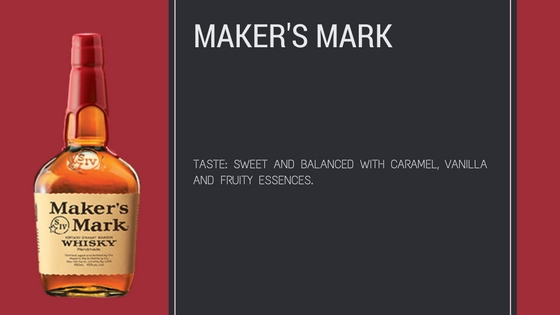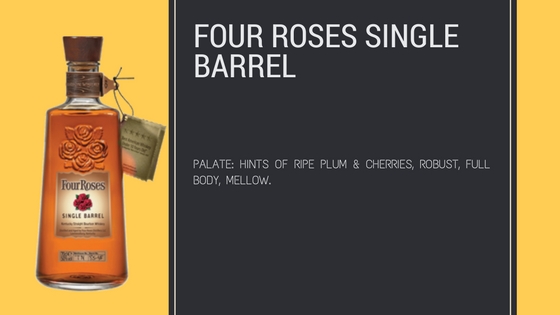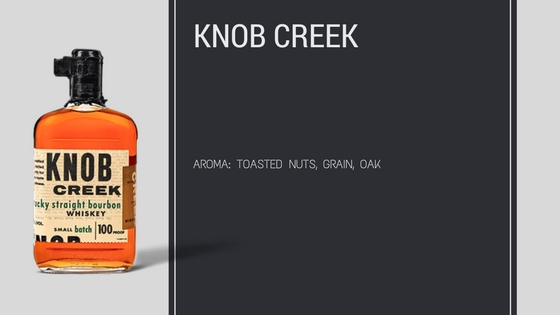Few things in life are as enjoyable as slow sippin’ a beautiful bourbon. Fact is, we love this truly American whiskey. Like great works of art, we can appreciate each for its unique style and colorful notes, whether it’s bold tastes and smooth finishes or fruity aromas and spicy touches.
Let us be clear, the bourbons below are some of the best bourbons we’ve ever tried. And we’ve tried a lot. A lot. We’ve hit the Bourbon Trail, attended BourbonFest and spent countless hours and dollars researching. These are the bourbons we love neat, with a splash of water, or mostly on the rocks. If you want to use them in cocktails, that’s your business. But we’re not sure why that would ever be necessary.
Here our Man & Gear’s “Best Bourbons,” in no particular order of awesomeness…

Maker’s Mark Kentucky Straight Bourbon Whisky
Bill Samuels, Sr.—the man behind Maker’s Mark—simply wanted a whisky he would enjoy drinking, so says the whiskey maker. Well, he also succeeded in creating a whisky that everyone loves. At 90-proof, this Kentucky Straight Bourbon is remarkable. It’s made with soft red winter wheat, instead of the usual rye, for a full-flavored bourbon that’s never bitter or hot. To ensure consistency, they rotate every barrel by hand and age the bourbon to taste, not time. Every bottle of Maker’s is still hand-dipped in signature red wax (yes, we tried it and it’s harder than you think) at the distillery in Loretto, Ky.
Tasting notes
Proof: 90
Aroma: Woody oak, caramel, vanilla and wheat prevail in the nose.
Taste: Sweet and balanced with caramel, vanilla and fruity essences.
Finish: Smooth and subtle.
Also consider: For those looking for something with a little more bite and kick, we would be remiss if we didn’t point you toward Maker’s Mark Cask Strength, which hits proof between 108-114.
Learn More: Maker’s Mark

Four Roses Single Barrel
This fabulous 100-proof whiskey has more medals than Michael Phelps at an Olympics, picking up gold hardware at the San Francisco World Spirits Competition and Denver International Spirits Competition. You’ll want to savor the taste of this premium Single Barrel again and again. It’s complex, full-bodied and surprisingly smooth with a delicate, long finish that’s unbelievably mellow. Drink straight up or on the rocks.
Tasting notes
Nose: Fruity, spicy, floral, caramel, vanilla, cocoa, maple syrup, moderately woody.
Palate: Hints of ripe plum & cherries, robust, full body, mellow.
Finish: Smooth & delicately long.
Also consider: If you’re looking for something with a lower price tag, you won’t find a smoother and more mellow bourbon for the money that their standard Four Roses Bourbon. It’s an 80-proof bottle of happiness.
Learn More: FourRosesBourbon.com

Angel’s Envy Kentucky Straight Bourbon
This unique bourbon in the uniquely shaped bottle has been on our mind since we got our first taste last year. We thought, “Where have you been all my life?!”
The whiskey maker guides each batch’s conditioning, blending the handcrafted bourbon in small batches of 8 to 12 barrels at a time.
It’s typically aged for up to 6 years. While they lose about 5% of the spirit each year to evaporation, or “the Angel’s Share,” what’s left behind after is truly worthy of envy.
Once it’s deemed ready, they finish the bourbon in ruby port wine casks—using 60-gallon ruby port barrels made from French oak and imported directly from Portugal—which adds subtly distinct flavor nuances that enhance the whiskey without challenging it. The port finishing process lasts between three to six months, depending on taste.
In the end, you’re left with an 86-proof whiskey of unprecedented smoothness, sweetness and balance.
Tasting notes
Appearance: Gold-color laced with reddish amber hues, nearly copper in tone
Nose: You’ll detect notes of subtle vanilla, raisins, maple syrup and toasted nuts
Palate: Vanilla, ripe fruit, maple syrup, toast and bitter chocolate
Finish: Clean and lingering sweetness with a hint of Madeira that slowly fades
Learn more: AngelsEnvy.com

Woodford Reserve Kentucky Straight Bourbon
At 90 proof, Woodford does everything right with this. Of course, they’ve had lots of practice. The whiskey maker first crafted bourbon on the site of the Woodford Reserve Distillery, a National Historic Landmark, in in Versailles, Ky., in 1812. The well-balanced taste is comprised of more than 200 detectable flavor notes, from bold grain and wood, to sweet aromatics, spice, and fruit and floral notes. The silky smooth finish is sure to put a smile on your face.
Tasting notes
Appearance: Clean, brilliant honey amber.
Nose: Heavy with rich dried fruit, hints of mint and oranges covered with a dusting of cocoa. Faint vanilla and tobacco spice.
Taste: Rich, chewy, rounded and smooth, with complex citrus, cinnamon and cocoa.
Toffee, caramel, chocolate and spice notes abound.
Finish: Silky smooth, almost creamy at first with a long, warm satisfying tail.
Learn more: Woodford Reserve

Knob Creek Bourbon Whiskey
The Clermont, Ky., whiskey maker ages every batch in maximum-char barrels to pull every bit of natural sweetness from the oak. As a result, this exceptional, full-bodied bourbon strikes the senses with a maple sugar aroma, distinctive sweetness and rich, woody, caramel flavor with a long, smooth finish. Made at 100 proof and created to reflect the flavor, strength, care and patience that defined pre-prohibition whiskey, Knob Creek is perfect straight or cooled slightly with one or two ice cubes. Trust us, it doesn’t disappoint.
Tasting notes
Color: Copper to medium amber
Taste: Rich, sweet, woody, full-bodied, almost fruity
Aroma: Toasted nuts, grain, oak
Finish: Long, rich and glowing.
Learn more: KnobCreek.com

Basil Hayden’s Kentucky Straight Bourbon Whiskey
Not yet privy to the old guard’s ‘rules’ of bourbon, legend has it that the bourbon’s namesake Basil Hayden set out to make a batch simply using the ingredients he had on hand, unaware of what the traditionalists might think of his mash. What resulted was a bourbon with a uniquely high-rye mashbill, combining the sweetness of corn with the spicy undertones of rye. The purists may have been displeased, but not the neighbors who tried it. We don’t really care what the history has to say, we love every drop of this 80-proof bottle of buckled goodness.
Tasting notes
Aroma: Spice, tea, hint of peppermint
Taste: Spicy, light-bodied, gentle bite
Finish: Dry, clean, brief
Learn more: BasilHaydens.com

Jim Beam Black
This premium 86-proof, extra-aged bourbon sits years longer in white oak barrels than original Jim Beam at the whiskey maker’s home in Clermont, Ky. It’s those extra years of aging that give it its full-bodied flavor with smooth caramel and warm oak notes. For those who love a bolder, deeper flavor, look no further.
Tasting notes
Color: Brownish gold
Nose: A deep nose of caramel, oak, cinnamon and vanilla.
Taste: Caramel and oak followed by vanilla and a robust spice. Citrus, dark fruit preserves and a bit more of that corn and yeast from the nose round out the taste.
Finish: A smooth caramel that slowly fades to warm oak and vanilla.
Learn more: JimBeam.com

Pappy Van Winkle’s Family Reserve 20 Year
We’ve heard this stuff is amazing. But despite following multiple avenues to secure a bottle, we’ve had zero luck. Zero! We’re pretty sure they’ll find Bigfoot before we pop open a bottle of this mythical creature. That said, if you get a bottle and want to share, “contact” us and listen closely for our impending screams of joy.
Learn more: OldVanWinkle.com
WHAT IS BOURBON?
Remember, all bourbon is whiskey, but not all whiskey is bourbon. A strict set of standards from the government regulates what’s what.
From a legal standpoint, bourbon’s definition varies around the world, but many trade agreements require the name “bourbon” to be reserved for products made in the United States. And we couldn’t agree more.
So here in the U.S., in order to be called bourbon, it must be…
• Produced in the U.S.
• Made from a grain mixture that is at least 51% corn
• Aged in new, charred oak containers
• Distilled to no more than 160 (U.S.) proof (80% alcohol by volume)
• Entered into the barrel for aging at no more than 125 proof (62.5% alcohol by volume)
• Bottled (like other whiskeys) at 80 proof or more (40% alcohol by volume)
Bourbon has no minimum specified duration for its aging period. Products aged for as little as three months are sold as bourbon. The exception is straight bourbon, which has a minimum aging requirement of two years. In addition, any bourbon aged less than four years must include an age statement on its label.
Bourbon that meets the above requirements, has been aged for a minimum of two years, and does not have added coloring, flavoring, or other spirits may (but is not required to) be called straight bourbon.
• Bourbon that is labeled as straight that has been aged under four years must be labeled with the duration of its aging.
• Bourbon that has an age stated on its label must be labeled with the age of the youngest whiskey in the bottle (not counting the age of any added neutral grain spirits in a bourbon that is labeled as blended, as neutral-grain spirits are not considered whiskey under the regulations and are not required to be aged at all).
Bourbon that is labeled blended (or as a blend) may contain added coloring, flavoring, and other spirits (such as un-aged neutral grain spirits); but at least 51% of the product must be straight bourbon.
Bourbon which has been aged for fewer than 3 years cannot legally be referred to as whiskey (or whisky) in the EU.
Why is it sometimes spelled “whisky” and other times “whiskey”?
Generally the Scots spell it “whisky” and the Irish spell it “whiskey.” This difference in the spelling comes from the translations of the word from the Scottish and Irish Gaelic forms. Whiskey with the extra ‘e’ is also used when referring to American whiskies. This ‘e’ was taken to the United States by the Irish immigrants in the 1700s and has been used ever since. Although to be clear, there are still a handful of American whiskies that prefer to go with “whisky”—we’re looking at you Maker’s Mark—while most just stick with “whiskey.” (Source)

